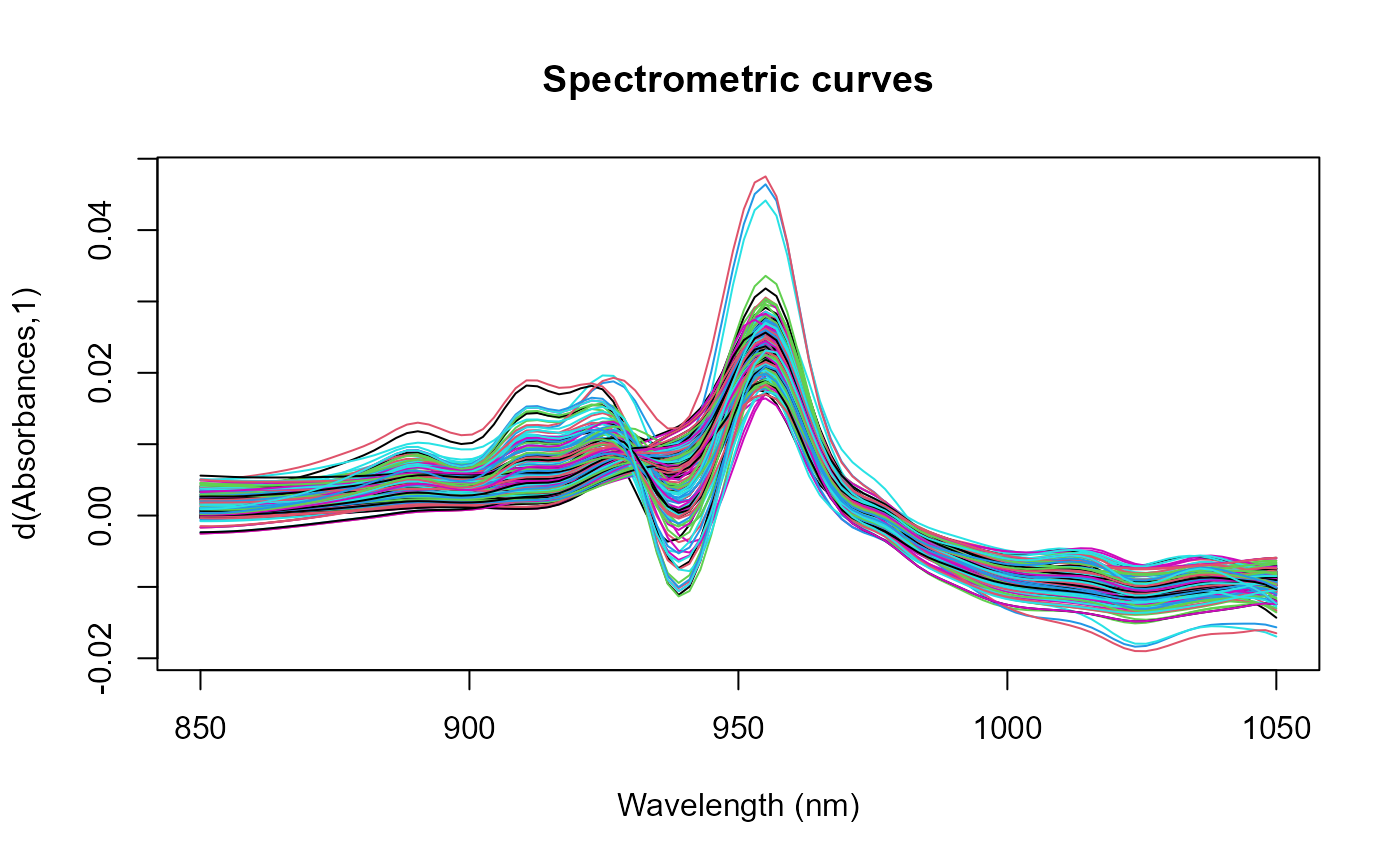ldata is a list with two type of objects:
dfis a data frame with the multivariate data with n rows....fdata objects of classfdatawith n rows.
Arguments
- df
data frame
- ...
Further arguments passed to methods.
- mfdata
list of fdata objects
- i
index
- row
logical If
FALSE(by default),iindex selects the variables. IfTRUE,iindex selects the observations.- subset
subset
- ask
logilcal If TRUE (and the R session is interactive) the user is asked for input, before a new figure is drawn.
- color
colors to interpolate; must be a valid argument to
colorRampPalette.- var.name
name of continuous univariate variable used in
colorargument- ldata, x
object of class
ldata
Examples
data(tecator)
ab0 <- tecator$absorp.fdata
ab1 <- fdata.deriv(ab0)
ab2 <- fdata.deriv(ab0,nderiv=2)
ldat<-ldata(tecator$y,ab1=ab1,ab2=ab2)
is.ldata(ldat)
#> [1] TRUE
class(ldat)
#> [1] "ldata" "list"
plot(ldat[[1]])
 plot(ldat[[2]])
plot(ldat[[2]])
 # plot(ldat)
# plot(ldat,var.name="Fat")
# plot(ldat)
# plot(ldat,var.name="Fat")